NavWorx ADS600B Transciever
This year is an exciting year of advancement for ADS-B Technologies! Somewhere around the OSH time period I received my ADS600B Transceiver, which was a very simple swap from my ADS600 that I had previously. The ADS600B does have a different case, with a slightly larger footprint, which caused me to have to re-work my mounting in the RV-10 tail...widening the footprint mounting width. I simply added a plate to my existing angle that was attached to my J-stringers and gave it a secure way to fasten to the existing angle brackets. The antenna wires hooked up with no problem, since I had left a small amount of slack in the cables. The connector is pin-for-pin compatible, but as you will read below, I did eventually add one additional pin.To also give you a little more information about my ADS600B, I have the ARINC equipped version, which turns out to be a good idea for many people. ADS-B systems like this need a Pressure ALT (PALT) input, and depending on your system, many people can send that via RS232 from an encoder, from a transponder via RS232, or from a transponder like the GTX330 via ARINC. For many reasons, the GTX330 is the smart buy in a transponder...it offers you future options to upgrade to 1090ES for ADS-B out if you wish, it gives you ARINC in/out ports, and it gives you an additional RS232 output...all of which can be handy depending on your particular system.
Here are photos of my install
 |
 |
 |
 |
As most of you know, ever since NavWorx came out with their ADS600, they've worked to get it integrated to the Chelton systems in a secondary interface method, as well as worked at getting it integrated to a variety of experimental EFIS systems....experimental because in the certified world, Garmin and Avidyne are the only big players and it's unlikely Garmin will go out of it's way to help anyone else integrate to their units...preferring to overcharge the world for their offerings. NavWorx ADS600B is their more recent ADS-B UAT that also provides the ADS-B "Out" as required in the future by a mandate. The ADS600B has a transmitter on board that has many of the same operational functions as a transponder. The integration of the NavWorx ADS-B systems to the Cheltons is basically a 2-option thing.
1) From day 1, NavWorx would interface with the Chelton screens if you configure your chelton as "ADS-B" in the limits. This interface provides both TIS-B (Traffic) and FIS-B (Weather) to the Chelton. The NavWorx actually supports more data products than the Chelton will, if Chelton would take the time to add some features to their software. Utilizing the ADS-B method of integration, if you are currently today flying with no weather or traffic interface, you can get BOTH on your chelton, for basically just the cost of the ADS600/ADS600B. It's a simple serial interface, and you could have NEXRAD and other services. You would need to purchase the ADS600/ADS600B, and likely do not need the ARINC input, although it could be helpful to have it.
2) Over the past couple years there was the ADS600 which was receive-only for ADS-B, and NavWorx worked on a custom interface for our systems to allow those of us with Satellite weather via WSI to keep using WSI, but still get the benefits of TIS-B Traffic input. WSI uses the serial port that the ADS600 would use in ADS-B mode, and if you are in ADS-B mode, you cannot have a separate TCAS/Traffic system at least on the Chelton Sport systems. NavWorx designed an interface that would utilize our existing port for TCAS, and feed us traffic via that port. Before NavWorx, many Chelton owners may have even purchased the DAC GDC34A ARINC to Serial converter, to connect to your GTX330 transponder for Mode S (TIS-A) Traffic. I had that before, and it worked very well, but as you know, Mode S coverage areas are much smaller than ADS-B's roll-out, and they are planned to be phased out....while at the same time, ADS-B roll-out is progressing rapidly, and even TODAY is basically already in a position where it has covered all or almost all of the Mode S coverage areas, and also covered significant portions of the rest of the countryside. This 2nd connection method basically replaced the GDC34A with the NavWorx box, and connected to your Chelton screen, with the option to also connect to your GTX330 and perform "Composite TIS"....their feature to bring you Mode S coverge when in Mode S areas, and TIS-B coverage when in ADS-B coverage areas. That too was working well on the ADS600 for me.
Then the FAA kind of mucked it up a bit. They started on their newer ADS-B ground station rollout, to ONLY broadcast ADS-B services if there was a participating (broadcasting) airplane in that service area. They wanted to force everyone to buy/have ADS-B OUT, in order for us to get ADS-B IN. I was able to fly a common flight from Wisconsin to Florida and some areas were broadcasting traffic to me, but some areas weren't. The limitation was, I wasn't broadcasting MY information.
Current Segment 1 Roll-out (Note: from experience, it looks like this is mostly implemented!)
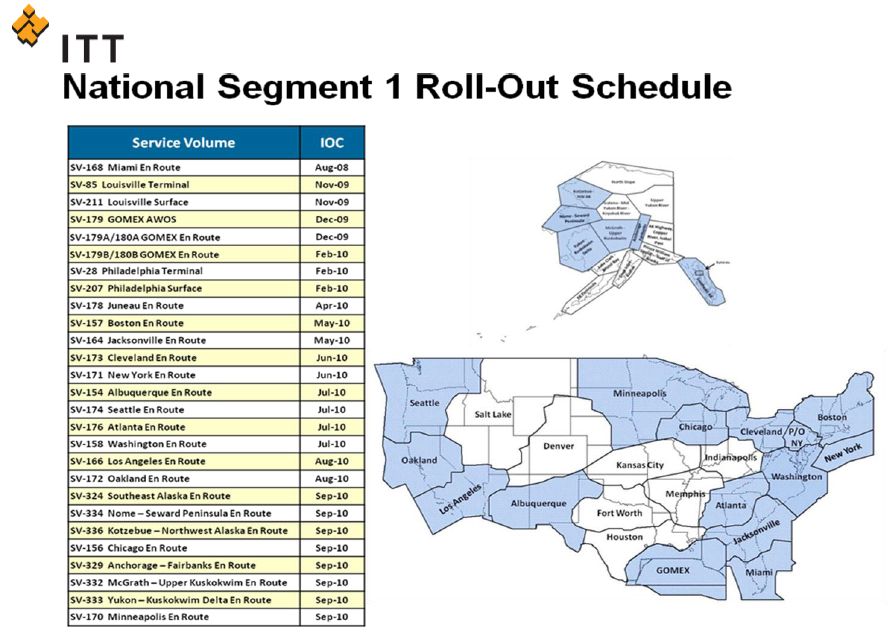
If you look at the coverage map in the post above, you will see that the segment 1 roll-out has prgressed pretty far. I've seen traffic targets in areas I never though I would, like remote Idaho and East Oregon, over some really empty areas of Iowa, and just generally in many areas I never would have had a chance to use Mode S.
Luckily NavWorx was able to gain FCC approval on their ADS600B, which is an IN/OUT version of their box, that made it possible for me to fully receive traffic in many more locations. And I've found on a couple trips now, that the coverage is pretty astounding...really. Broadcasting my position has allowed me to receive in areas I didn't think I could. Now, the ADS600B connected as in method 1, as an "ADS-B" box, is something that worked "out of the box", as that communication standard was well established and known to NavWorx. That 2nd method of connection, Traffic only, took quite a bit of engineering on their behalf to bring to our Chelton screens. It is important though, because the WX services offered by ADS-B will never EVER be able to be as fully available in coverage, especially on the ground, as WSI is. So I'm a dedicated customer to WSI, but I want my ADS-B traffic. This interface gave me the option to do that. On the ADS600, the interfacing was complete a long time ago, and I had been flying that system for quite a while with good results. With the release of the ADS600B, it was a new addition of hardware, and a complete change of software, so they had to hit the integration efforts again to make it work well for our Chelton systems. Recently V.2.32 of their software came out which brought the ADS600B back to fully functional status for our Chelton users, and V.2.43 added a great feature beyond that, that I'll describe below. I'm pretty excited about that, as I'm soon going on another flying trip that will put me in many good coverage areas. (Note: as of the time I posted this to my website, the trip is completed...look for the 2010 California trip write-up for the ADS-B report)
A note about Composite-TIS: Before, where I live, I am close to MSP, where they only had Mode S. If I flew East though to the other side of Wisconsin, I was in an area of ADS-B coverage. Composite TIS was a GREAT thing, because I got traffic information in both areas. My GNS480 was only hooked to my GTX330 (I believe the ADS600/600B can interface directly to the 480 for non-chelton users), so my GNS480 would only work for me in ModeS areas, but my Chelton, with it's forward facing traffic on it's PFD AND on the MFD, would show both systems. Today I am starting to find that now that MSP has ADS-B coverage, as do most of the previous Mode-S areas, that I don't think Composite-TIS is going to be as interesting, or perhaps even desired any longer, for many people. I will attach some screenshots at the bottom of this post, and you'll see duplicate traffic targets. Since ADS-B and TIS-A actually calculate and position traffic in different methods, and things also change as you maneuver, they sometimes overlap, and sometimes have slight errors in their relative positions to eachother. Having duplicate targets on screen, now that we are getting some very extended ADS-B coverage, probably isn't worth the hassle of having it in those very few areas where you'll currently maybe get some ModeS coverage where there isn't ADS-B. And of course, it's a configurable option, so if you want to turn on/off Composite-TIS, it is able to be done.
The ADS600B Transceiver can still interface to your GTX330 via ARINC, if you buy the ARINC module for it, and that does give you the option of Composite TIS, and also is an easy way to feed the ADS600 your pressure altitude. I still have a GDC34A installed in my panel, and I implemented both the ADS600 and ADS600B after upgrade, by utilizing the same connector. I unplugged my GDC34A's cable, made a mating connector to the harness to my ADS600(B), and just plugged it in. Since the interface was the same, I was able to switch back and forth between systems if needed, as they developed their hardware/software, for testing.
I wanted to let you all know about the ADS600B's availability now. I waited a while, since you probably all know that the system worked fine with the Cheltons in ADS-B mode, but I wanted to wait to talk about my installation of the ADS600B until the software was caught up so that the TCAS-Like traffic feature and connection option was available. I know there are many of you in my same boat, who want your WSI weather. Now once again you can have your weather, but also get a greatly expanded Traffic system. The price is more than 2X less than offerings by Garmin (probably closer to 3X less) and some other companies. Also, the interface itself to the Chelton isn't just a simple standard interface, so it is much less likely that you'll find other vendors that will take the time to integrate to the Chelton in this way.
Here I will post you some crappy pictures of the ADS-B's traffic targets. You'll note that I still have it in Composite-TIS mode, so it gets a bit cluttered with duplicate targets. Subsequent to this write-up, I have turned it off for good...so I don't see those anymore. One thing that's cool about the NavWorx is you can set the maximum target distance, so you can choose to see 5,10,15,20,25 targets, and you can set the range to 10,20,30,50 or whatever mileage you want. I think I'm going to set mine down to 10 targets, with 25 mile range. It'll show you the closest 10 targets.
For those that want a NavWorx system, contact them at 1-888-NAVWORX (628-9679). If you buy systems, I get no kickbacks, so I'm not pushing them for that reason. I just think that these days, everyone should be able to put Traffic AND weather on their Cheltons, or other EFIS systems, and this is a great way to do it, ESPECIALLY if you're one of those folks who only has WX on a handheld. Now you can get NexRad on your MFD, along with lots of other information. Also, NavWorx really did spend some time and effort to interface to us in the experimental world, so it would be nice for them to see that there are those of us who want their product. (I am not affiliated with the company in any way)
Here are traffic comparison photos between the GNS480 in my plane (ONLY has Mode-S traffic) and the targets displayed using both ADS-B and Mode-S via composite TIS from the ADS600B.
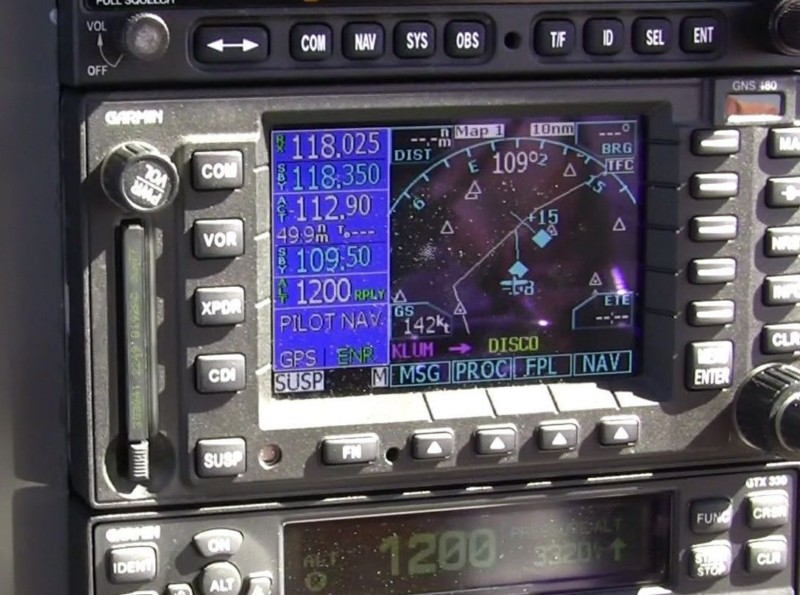
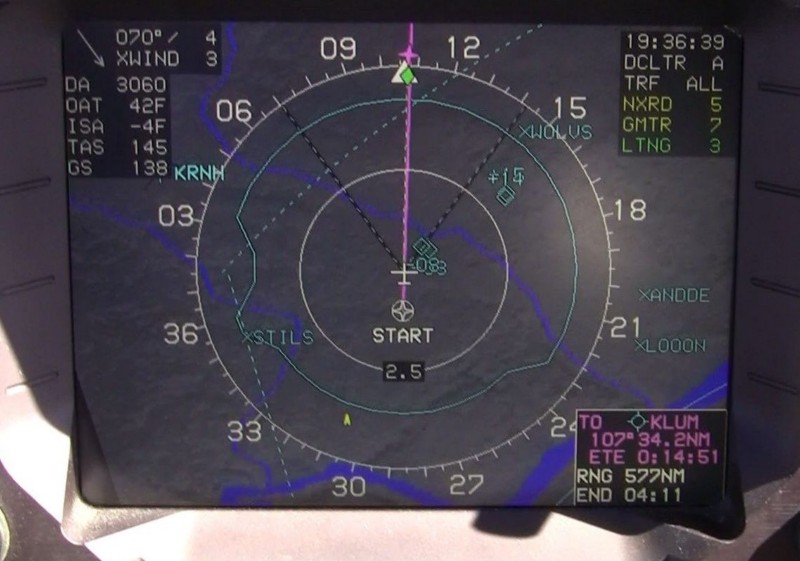
Above: 2 targets shown...note the same position on the Chelton, and both ADS-B and Mode-S targets.
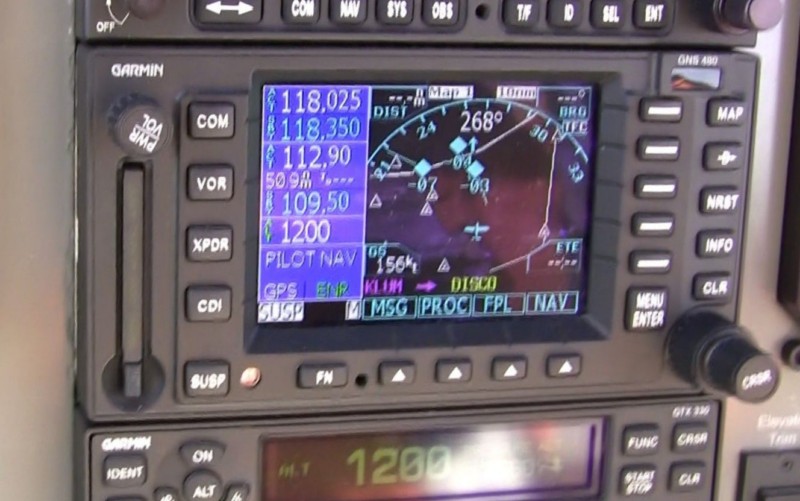
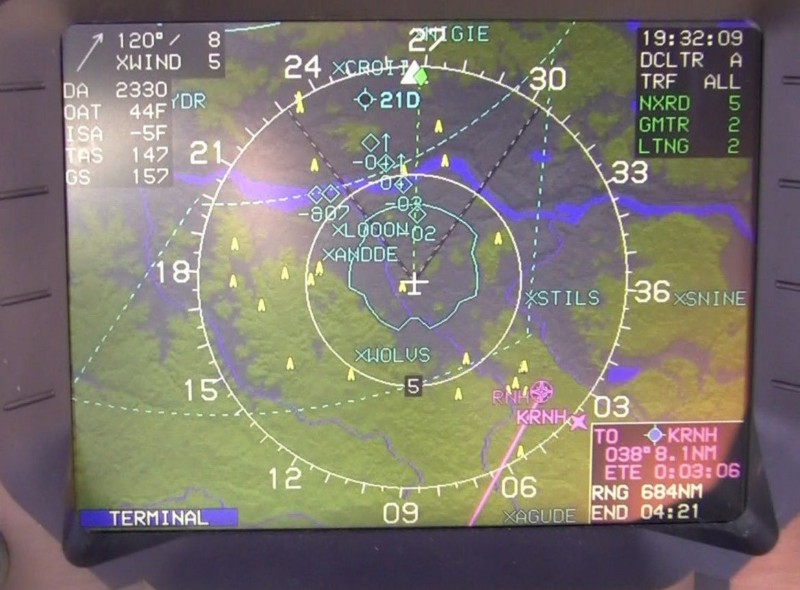
Above: The traffic coincides very nicely, although Mode-S and ADS-B have different coasting times and other things that may make them slightly different at times, for a very short period.
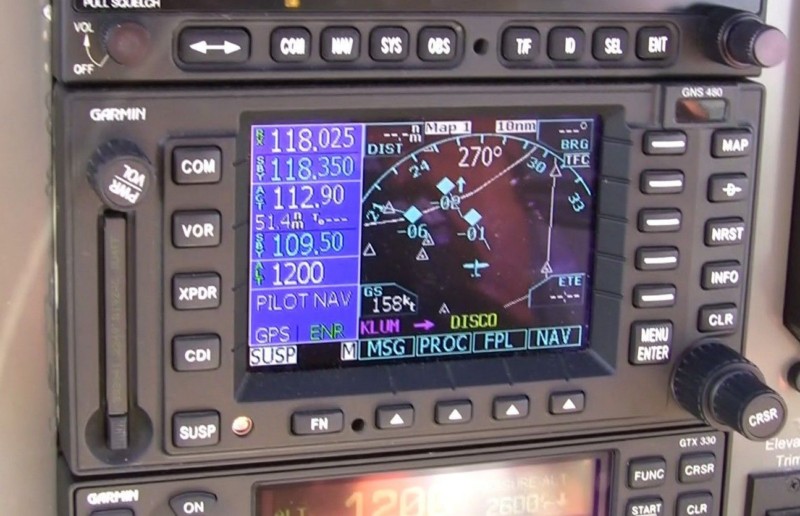
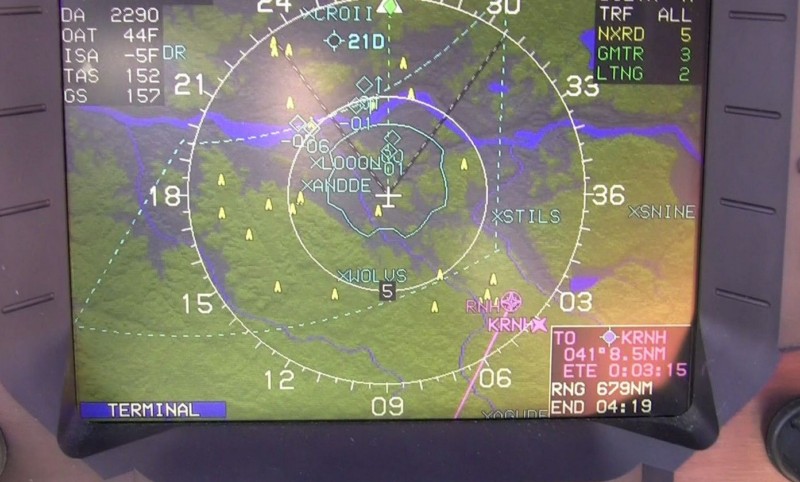
Above: Just another pair of photos.
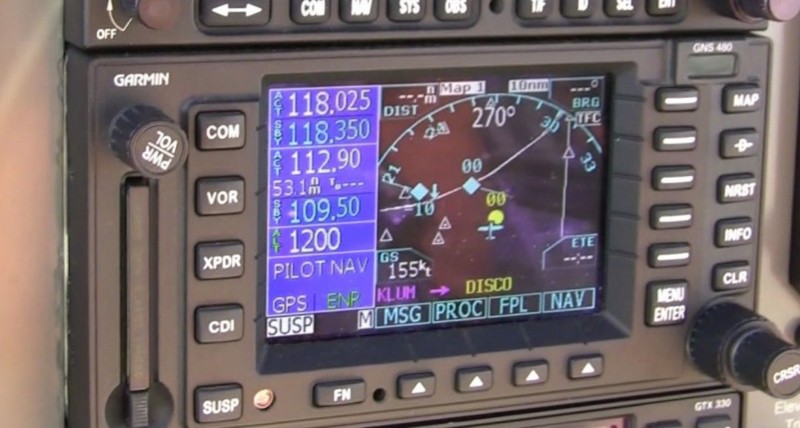
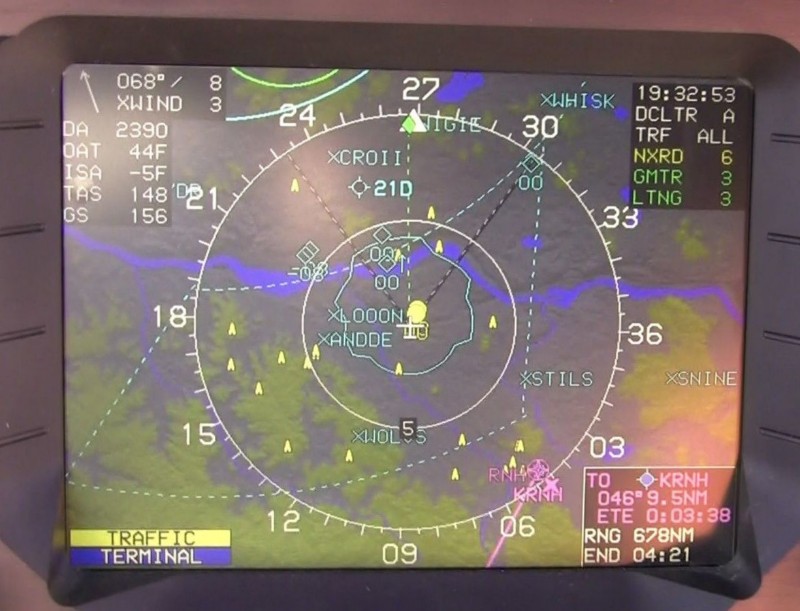
Above: More targets, this time with a traffic alert!
Additional Transponder Integration!
The new integration is that now, if you have a GTX330 (and presumably GTX327, although that isn't tested yet) transponder, you will will be able to pass the ADS600B your squawk/ident/mode information without having a panel-mounted control head.
One thing many people don't know about ADS-B is that the transmitter broadcasts your info, just like a Mode S transponder, including N-Number/ICAO code, squawk code, does IDENT, and there is a ALT mode and Standby/GND mode too. In time, you will see NavWorx work with experimental EFIS companies to provide a method of on-screen code setting of the UAT, but that is one area where as you could expect, Chelton will leave me hang, since I'm sure they won't develop that software for our systems. As of today, you could operate those UAT's just squawking 1200 all the time, and be fine, since they're not required anyway. But eventually you'll need to fit and play nicely in the IFR system and have squawk codes broadcast.
The integration that I just tested (V.2.43) with the GTX330 transponder provides for monitoring the Transponders functional mode and mimic-ing what it does. If you squawk 1234, the UAT adopts that squawk. If you IDENT, so does the UAT. If you hit STBY, the UAT stops transmitting, if you hit ALT, the UAT starts transmitting. This is sweet. No control head required (whereas some users will need to put a control head on the panel), and you have the benefit of only having to set the squawk in one place...the transponder.
The GTX330 is the perfect transponder for this because it has ARINC outputs, which will be nice because with ARINC out, you can have the option of Composite TIS if you want, but it also feeds Pressure Altitude to the UAT. Pressure altitude is NOT on the serial line coming out of the GTX330's "REMOTE" format of data. The GTX330 also has 2 serial IN and 2 serial OUT ports. On my install, the #1 pair is for my GNS480's remote controlling of the transponder. My #2 IN is for the altitude encoder. The #2 OUT is not used, but I used it set to "REMOTE" to connect to the UAT, which is how the UAT gets the squawk info.
If you have a GTX327, it also has the REMOTE option, but, it only has 1 IN/OUT pair, and then a separate IN. This means that if you have a GNS480, you'll have to split the REMOTE serial line OUT and use that feed to the UAT. If you do not have a GNS480, you probably won't have anything on Serial #1 anyway, so you can just turn on the OUT side to "REMOTE" and use that. The #2 IN is used again for the encoder. The GTX327 does not have any ARINC ports to provide Pressure Altitude to the UAT. NavWorx does have the capability to add additional serial ports to the box in the future, to provide for your encoder to feed the UAT directly. Presently, the above interface that I'm talking about uses the ENCODER IN RS-232 channel, and in config mode you can set it to "Transponder Control" instead. So if you already were using the encoder input, the tranponder control won't work for you right now. That is why the ARINC input is so nice. NavWorx did tell me though that they will add more serial channels in the next board revision, and also they have an RS-422 channel that can be re-purposed as an RS-232 as well, so 327 users are only a short step away from having both Encoder and Transponder control in their systems. If you are a person with a GTX327, it may be an opportunity for you to test the new interface.
At any rate, I thought I'd fill you in on this cool interface now. I've participated in some of the testing of their new software revs. They aren't paying me, and neither was Chelton at any point, but I do get enjoyment out of participating in software improvements. I think it benefits the whole group.
Site Home | N104CD Home